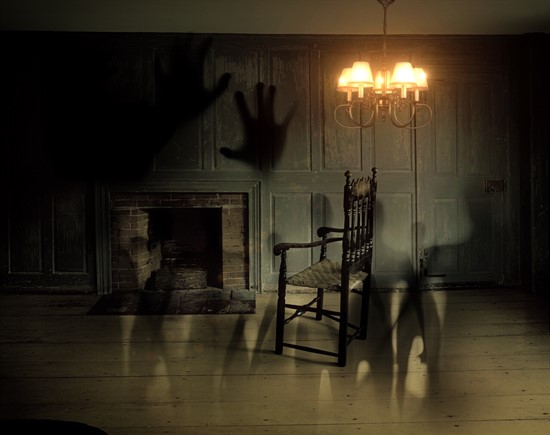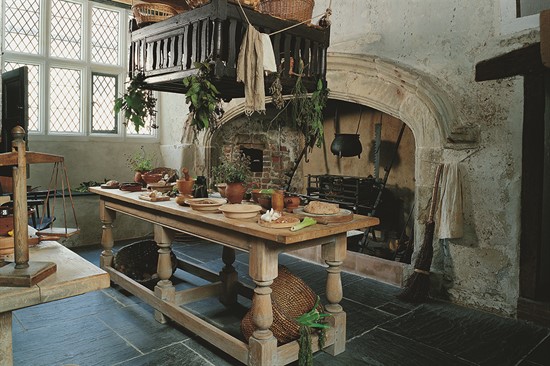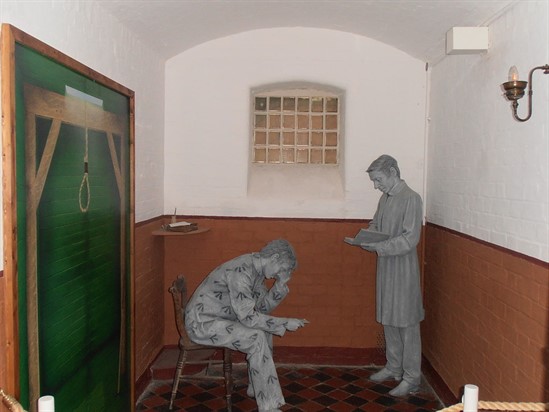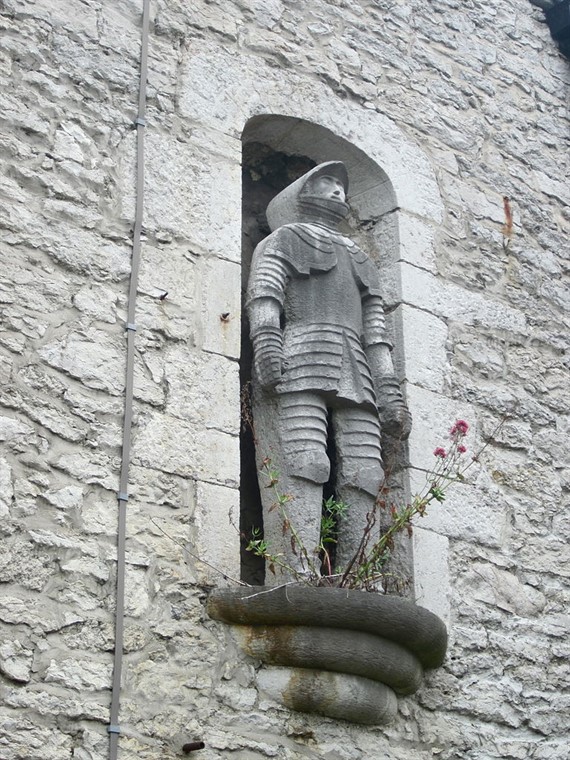Posted on 13/09/2017 by David
Ours is an ancient realm with stories woven into the fabric of the land and the buildings that dot it. Thousands of years of history collide here so it's no surprise that sometimes the lines between fact and fiction blur.
Among the myths and legends of North Wales are countless stories of restless spirits, mischievous ghosts and grief-stricken wraiths, many of whom make their home in some our best-known and much-loved buildings.
You've probably visited these places on a sunny day but did you ever give a thought to the unsettling stories they might tell after the sun sets? All our historic buildings have fascinating back stories but all too often they are cruel and violent; it's no wonder past residents are reluctant to go quietly into the night.
Whether you're a believer, a curious skeptic or a thrill seeker, a visit to one of these properties 'after dark' offers the chance to learn more about the history of our most iconic buildings and maybe even make contact with the other side. Failing that it's a night out with a difference and a chance to make new friends!
Many properties hold year round paranormal evenings and ghost hunts but there's something about an investigation at this time of year that makes it just that bit more exciting - and frightening!
For this week's blog, we've chosen three of the spookiest buildings in North Wales. All the sites hold regular paranormal investigations attracting professional ghost hunters and enthusiastic amateurs alike. So the question is, are you brave enough to visit after dark too?

Plas Mawr
Conwy’s iconic Elizabethan mansion is an atmospheric location for a night of thrills and spills. A sad and tragic history means you're almost guaranteed to hear things that go 'bump' in the night.
Plas Mawr, a CADW-maintained property in the centre of Conwy, is one of the most-visited historic buildings in North Wales. Popular with tourists, it is a fine example of Elizabethan architecture and provides a fascinating insight into the daily life of the rich in the Tudor period.
The house has a long tradition of ghostly goings-on, which the volunteer stewards of the house are all too familiar with. Their intimate knowledge of Plas Mawr (and first-hand experience of its ghostly residents) makes a paranormal investigation here memorable and rather terrifying!
During an investigation, you can participate in table tipping and glass divination in an attempt to contact the 'other side'. Try out the ghost hunting equipment but be on your guard; the shrewdest members of your party will notice walls emblazoned with pentagrams (intended to keep a demonic presence at bay) and exercise caution.

Ruthin Gaol
Prisons, by their very purpose, will have a violent and disagreeable past but Ruthin Gaol in Denbighshire has a particularly heinous history.
Situated in a pretty market town, the 19th century building is completely at odds with the genteel Tudor buildings that surround it. Oozing a sense of foreboding, the prison squats behind high walls and once held some of the most notorious criminals in North Wales.
If you visit, we suggest you steel yourself in readiness to explore this Pentonville-style prison - the only one of its kind open to the public. The museum that occupies the space now does little to disguise Ruthin's past life and visitors regularly report strange sounds, doors opening, cold spots and the sensation of being touched or prodded.
During an investigation, the very bravest among you might be locked in one of the cells, perhaps the cell of William Hughes, the only man to be executed on the site. Naturally, he wasn't happy about it - in life or death.

Bodelwyddan Castle
Bodelwyddan Castle is one of the great stately homes of Wales but the house has lived many different lives over the years. With its origins in the turbulent 15th century, the house has been a school for girls, a hospital for injured soldiers and a WW1 army training camp.
It's unsurprising then that Bodelwyddan is home to more than its fair share of paranormal houseguests. Over the years, investigations have been conducted by hoards of zealous investigators, including curious schoolgirls and celebrity ghost hunters. All agree that after dark this is one terrifying place!
Perhaps Bodelwyddan's most grotesque secret is best told by the man who uncovered it. Sir John Hay, 2nd Baronet, inherited the estate in the 19th century. He immediately set about putting his stamp on the place but soon made a gruesome discovery. His diary records:
Mr Welch came to us and with my father's consent we began to make the alterations at Bodelwyddan and to build the new room. We found human bones near one of the chimneys and I built them into the wall of the house behind the stone figure.
As far as anyone knows, the bones are still there, entombed behind a limestone sculpture known as the Long Man in the north wall of the castle. Who did the bones belong to? And why was the body concealed in such a way? The mystery smacks of evil-doing but the poor unfortunate soul remains nameless, left to wander the plane between the living and the dead.
Bodelwyddan Castle's very own paranormal team will guide visitors in a thrilling paranormal investigation around the castle, combining traditional divination techniques with the latest ghost-hunting equipment.

For the latest tour dates and to book tickets, simply click the links in the blog to be taken straight to the website. We hope you give ghost hunting a whirl; whatever you believe, it's a thrilling experience for those with an adventurous disposition and an amazing way to experience the dark side of North Wales.
Have you had a ghostly encounter in North Wales? We'd love to hear about it and may feature your experience in a future blog. Share your encounters with us on Facebook or Twitter.
Images courtesy of: Ruthin Gaol Llywelyn2000 via Wikimedia, 1999. The Long Man, Bodelwyddan Castle by Tyssil via Wikimedia, 2014.

